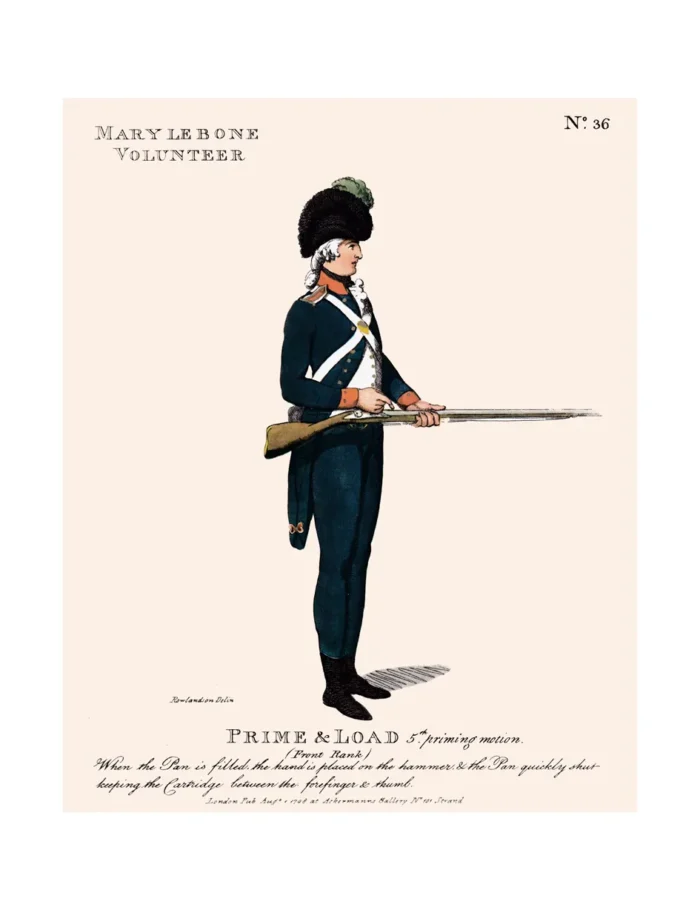No. 36 Marylebone Volunteer
£15.00
Marylebone
Details below
Who were the Loyal Volunteers ? See here
Shipping cost is the SAME for 1 to 10 prints – see Shipping and Returns
In stock
Description

Marylebone (see map) is a district in the West End of London, in the City of Westminster. Oxford Street, Europe’s busiest shopping street, forms its southern boundary. An ancient parish and latterly a metropolitan borough, it merged with the boroughs of Westminster and Paddington to form the new City of Westminster in 1965. The parish took its name from its church, dedicated to St Mary; the original church was built on the bank of a small stream called the Tyburn. The area comprised two manors. Tyburn was held by Robert de Vere, 3rd Earl of Oxford. Thomas Hobson bought it which his son exchanged with Henry VIII who enclosed part as a deer park, the origin of Regent’s Park. Lilestone Manor also passed into the hands of the Crown. The Ancient Parish church, St Marylebone Parish Church, was rebuilt several times. In 1710, John Holles, Duke of Newcastle, purchased the manor. His daughter, Lady Henrietta Cavendish Holles, passed it into the family of the Earl of Oxford. They commissioned John Prince to draw a plan that set Cavendish Square in a grid system of streets. Lady Margaret Cavendish Harley married William, 2nd Duke of Portland, and took the property into the Bentinck family. Such place names in the neighbourhood as Cavendish Square and Portland Place reflect the Dukes of Portland landholdings and Georgian-era developments there. In 1879 the fifth Duke died without issue and the estate passed through the female line to his sister, Lucy Joan Bentinck, widow of the 6th Baron Howard de Walden. Most of the Manor of Lilestone was acquired by Sir William Portman in 1554, and much of this was developed by his descendants as the Portman Estate in the late 1700s. Both estates have aristocratic antecedents and are still run by members of the aforementioned families. The Howard de Walden Estate owns, leases and manages the majority of the 92 acres (37 ha) of real estate in Marylebone which comprises the area from Marylebone High Street in the west to Robert Adam‘s Portland Place in the east and from Wigmore Street in the south to Marylebone Road in the north. In the 18th century the area was known for the raffish entertainments in Marylebone Gardens, the scene of bear-baiting and prize fights by members of both sexes, and for the duelling grounds in Marylebone Fields. The Marylebone Cricket Club, for many years the governing body of world cricket, was formed in 1787 and initially based at Dorset Fields before moving a short distance to its current home at Lord’s Cricket Ground in 1814.
Additional information
| Weight | 0.0121 kg |
|---|---|
| Dimensions | 25 × 35 cm |





